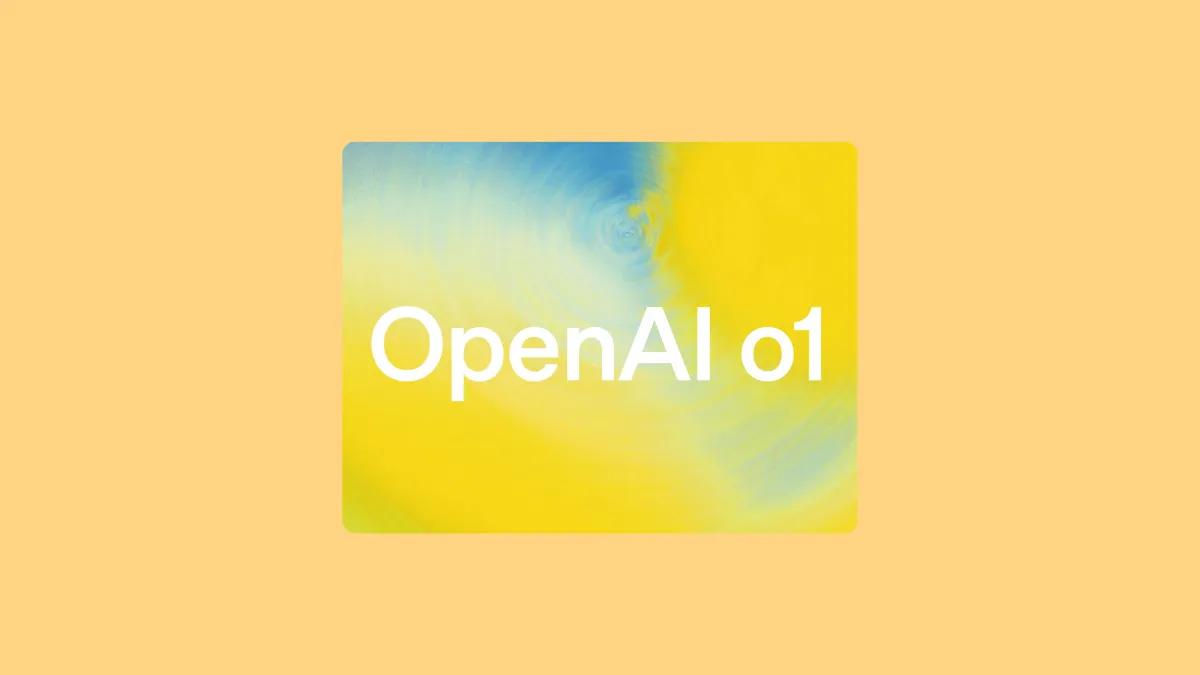- OpenAI releases two new models: o1-preview and o1-mini.
- The new models have reasoning capabilities and can think before responding.
- They are not suited for average tasks, though, and would be most useful for complex tasks.
Following hot on the trail of the rumors of OpenAI's Project Strawberry being released by the end of this month, the company has swiftly taken action and put its latest model out into the world already. While not exactly with the name Strawberry, the company's latest release OpenAI o1, is indeed the same model with reasoning capabilities that was churning the rumor mills.
There's also a smaller model – OpenAI o1 mini – that's cheaper than o1. The AI company seems to be continuing the trend it adopted when it started releasing smaller models with GPT-4o mini to serve developers better.
The name is a nod to starting fresh – resetting the counter back to 1 – with the company's other models' names being slightly confusing.
As expected, o1 is more expensive to run than existing models and the response time is also slower. However, the model being released is just a "preview" indicating the very early stages that it is currently in.
OpenAI o1 is separate from the GPT models and not just in capabilities. The new model also has been trained differently than the existing models using a new optimization algorithm and a new training dataset.
It can solve complex problems in science, coding, and math with "reasoning". o1 has been taught to solve problems using reinforcement learning, with a reward and punishment method. Instead of trying to predict the next words, it now uses "chain of thought" prompting to try and solve a query. It's the next step on OpenAI's roadmap on achieving human-like intelligence. This also makes the model more accurate, and less prone to hallucination (but it can still hallucinate).
When the user presents a prompt to o1, the model will start thinking and even present its thinking to the user. Its reasoning capabilities are extremely improved to the previous models for complex problems; it scored 83% on the International Mathematics Olympiad (IMO) whereas GPT-4o only scored 13%
While they can think before they answer and also present their "chain of thought" to the user, there is a limit imposed on this "thinking time". It might say something like "Oh, I'm running out of time, let me get an answer quickly" when it's nearing this limit, as per the report by The Verge.
While o1 can tackle hard problems that require a broad general knowledge of the world, o1-mini is suited for coding, math, and science tasks that don't require extensive general knowledge. The latter is also particularly adept at coding tasks and is nearly 80% cheaper than o1.
It doesn't have the other capabilities that GPT-4o does, like browsing the internet or accepting files/ images as input (but OpenAI is working on it). It's not a general model that will be useful for most people right now. It's specifically for people who need to solve complex problems like healthcare researchers, physicists, economists, software developers, etc.
Who can access the model? ChatGPT Plus and Team users can access o1-preview and o1-mini from within ChatGPT starting today with access for Edu and Enterprise users rolling from next week. ChatGPT Free users won't be able to access these models but the company says that they're working on providing access to o1-mini for free users.
The rate limits for both models are as follows: 30 weekly messages for o1 and 50 weekly messages for o1-mini. The company is working on increasing these limits.
Developers qualifying for API usage tier 5 can also start using both models today with a rate limit of 20 RPM. In the API, o1 is quite expensive: o1-preview costs $15 per million input tokens and $60 per million output tokens. For comparison, GPT-4o costs $5 per million input tokens and $15 per million output tokens.
How to access the models? o1 and o1-mini are accessible from the menu in ChatGPT and users can manually switch to the model they want to use. OpenAI says that they are working on enabling ChatGPT to be able to determine and use the appropriate model automatically on the basis of the prompt in the future.

With the release of o1 and o1-mini, OpenAI has once again set itself apart from its competitors. If the model can indeed perform complex reasoning tasks, it'll be a leap towards AGI. However, the initial impressions of some users show that o1 might not be as good at reasoning tasks and even fails at basic questions.
New O1 still fails miserably at trivial questions
by u/knowledgehacker in ChatGPT
Hopefully, the subsequent updates of the model would fare better. Notably, even with the release of o1 series, OpenAI would continue to release newer models in the GPT series, so don't lose hope for GPT-5.

